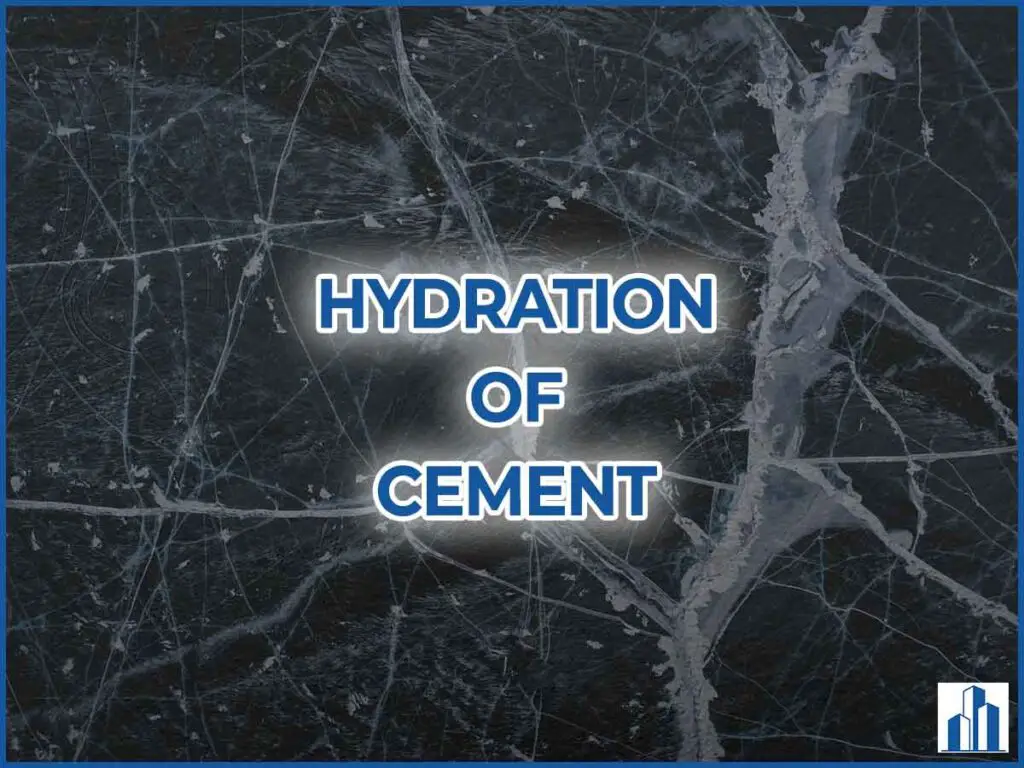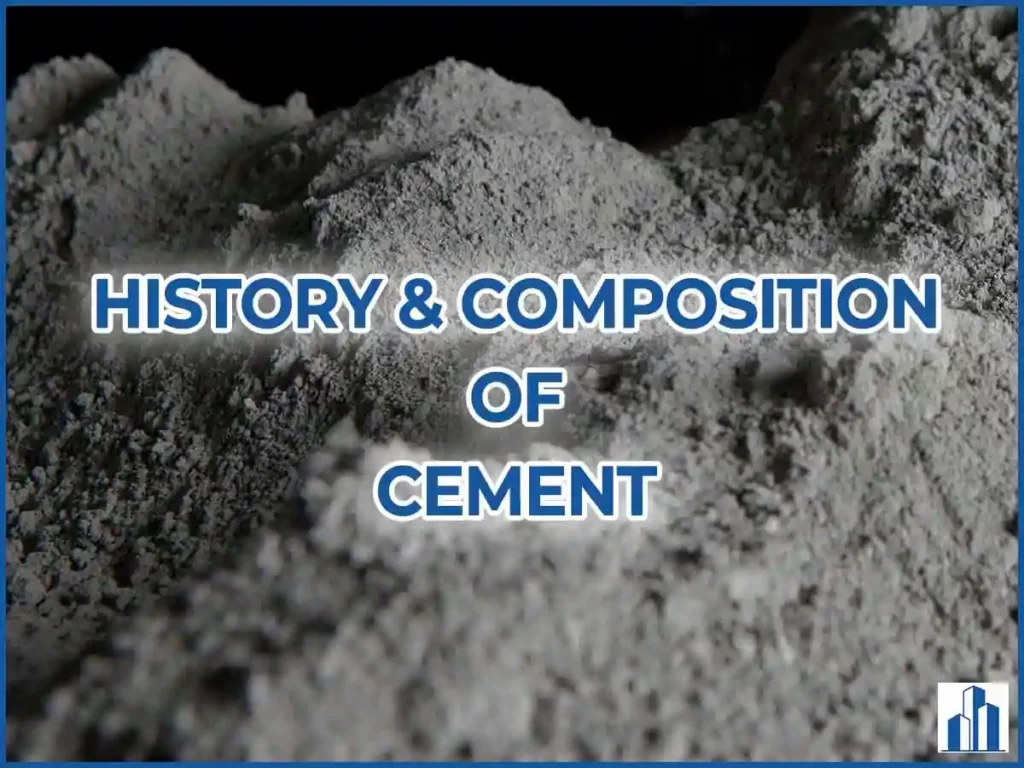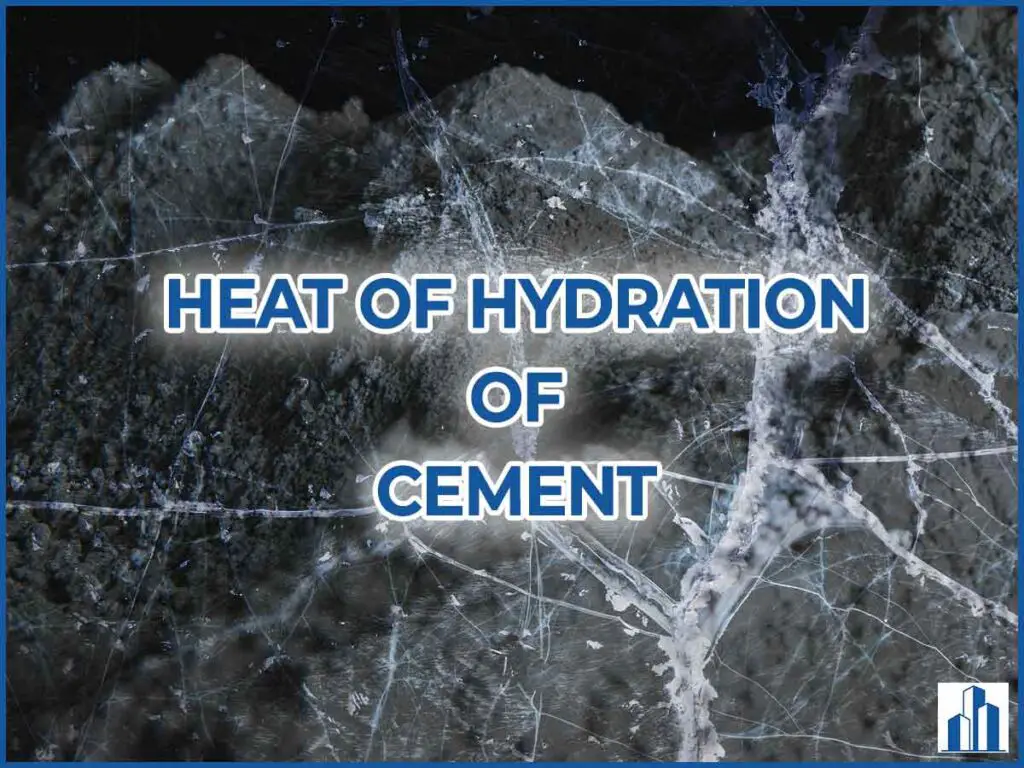Hydration of Cement
The powdered cement itself doesn’t exhibit any binding property. It acquires adhesive properties only when it is mixed with water. The chemical reaction that takes place between cement and water is called as Hydration of cement.
The cement hydration reaction is exothermic i.e., during hydration, it liberates a considerable quantity of heat. This liberation of heat is called Heat of Hydration. Normally, Heat of Hydration is measured in calories per g or Joules per gram.
Normal cement typically produces 89 to 90 Cal/g in 7 days and 90 to 100 Cal/g in 28 days. The hydration of cement is not an instantaneous one, it occurs rapidly at starting stage and slowly decreases over an indefinite period of time.
A Closer Look At The Cement Hydration Reaction
The major compound oxides present in the cement are called Bogue’s compounds (Listed in Table 2.0)
The Aluminate (C3A) is responsible for the setting property and the silicates (C3S, C2S) are responsible for the hardening property (Strength development). The various hydration products of cement are discussed below,
1. Hydration of C3S
During the hydration of cement, the C3S and C2S react with water and produce Calcium Silicate Hydrate, abbreviated as C-S-H, and Calcium Hydroxide, Ca(OH)2. C-S-H is the most important product of the Hydration reaction. It makes up about 50-60% of the volume of solids in a completely hydrated cement paste. It is the essence that determines the good properties of concrete.
The simplified equation can be written as,
2(3CaO.SiO2) + 6H2O → 3 CaO.2SiO2. 3H2O + 3Ca(OH)2
or it can be written as
2C3S + 6H → C3S2H3 + 3Ca(OH)2
[100] [24] [75] [49]
The corresponding weights are indicated in the brackets.
- C3S readily reacts with water and produces more heat of hydration. Hence, cement with more C3S content is best suitable for cold weather concreting.
- C3S is responsible for the early strength of concrete.
- The density and quality of C-S-H produced from C3S are inferior to that formed by C2S.
2. Hydration of C2S
Similarly, C2S reacts with water and produces C-S-H and Ca(OH)2.
2(2CaO.SiO2) + 4H2O → 3CaO.2SiO2. 3H2O + Ca(OH)2
or
2C2S + 4H → C3S2H3 + Ca(OH)2
[100] [21] [99] [22]
- C2S Hydrates slowly and produces less heat of hydration.
- C2S is responsible for the later strength of concrete.
- The density and quality of C-S-H produced from C2S are superior to that formed by C3S.
From the corresponding weights, we can see that the C3S produces less quantity of C-S-H when compared to the C2S.
NOTE
- The term C-S-H is hyphenated because it is not a well-defined compound i.e., its proportion can vary based on many situations.
- C-S-H is sometimes called a Tobermorite gel because of its structural similarity to a naturally occurring mineral called Tobermorite.
- C-S-H is more like a gel, consisting of poorly formed, thin, fibrous crystals that are infinitely small. Hence it is commonly referred to as C-S-H gel.
Now, Let’s see about the other product of hydration of cement i.e., Calcium Hydroxide, Ca(OH)2.
Ca(OH)2 constitutes 20 to 25 percent of the volume of solids in the hydrated paste. Ca(OH)2 can be seen as one of the most undesirable compounds in concrete because of the following reasons,
- Ca(OH)2 is soluble in water and gets leached out making the concrete porous, particularly in hydraulic structures. To avoid this condition, it is advised to use cement with more C2S, since C2S produces lesser Ca(OH)2 than C3S.
- The calcium hydroxide also reacts with sulphates present in soils or water to form calcium sulphate which further reacts with C3A and causes higher volume by-products which leads to the deterioration of concrete. This is known as a sulphate attack.
- Calcium hydroxide can react with CO2 present in the atmosphere and produces CaCO3. This carbonate can reduce the concrete’s pH, making the reinforcement susceptible to corrosion. This phenomenon is called as Carbonation of concrete.
Nowadays, we can easily overcome these bad effects by converting calcium hydroxide into cementitious products by blending the cement with pozzolanic materials such as fly ash, silica fume, etc. This blended cement is called Portland Pozzolana cement (PPC). This blended cement will have a low heat of hydration.
The only advantage is that Ca(OH)2, being alkaline in nature maintains a pH value of around 13 in the concrete which resists the corrosion of reinforcement. In the case of a carbonation attack, this advantage also becomes invalid.
3. Hydration of C3A
C3A can react with water in the following different ways,
- The reaction of pure C3A with water is very fast and this led to the formation of Calcium Aluminate Hydrate (C3AH6). This leads to a condition called Flash set, where cement sets immediately when mixed with water leaving no time for transportation and placing of concrete. The cubic compound C3AH6 is probably the only stable compound formed which remains stable up to about 225°C.
- To overcome the above difficulty, Gypsum (CaSO4.2H20) is added at the time of grinding the cement clinker. While mixing with water, gypsum readily dissolves and reacts with C3A to form calcium aluminate trisulphate hydrate (C6AS3H32) commonly called as Ettringite. It is a needle-like structure that quickly covers C3A and depresses the solubility of C3A. Thus, the Flash set is prevented.
- When the sulphate in the solution gets depleted, Ettringite becomes unstable and converted into a stable form called Monosulphate.
4. Hydration of C4AF
On hydration, C4AF is believed to form a system of the form CaO – Fe2O3 – H2O. A hydrated calcium ferrite of the form C3FH6 is comparatively more stable.
These products of hydration (C3AH6 and C3FH6) do not contribute anything to the strength. On the other hand, their presence is harmful to the durability of concrete particularly where the concrete is likely to be attacked by
sulphates. However, the hydrates of C4AF show a comparatively higher resistance to the attack of sulphates than those of C3A.
Key Takeaways
- The chemical reaction that takes place between cement and water is called as Hydration of cement.
- The cement hydration reaction is exothermic.
- There are 4 main compounds namely C3S, C2S, C3A, and C4AF called Bogue’s compounds that take part in the hydration of cement.
- The major products of the hydration of cement are C-S-H gel, Ca(OH)2, Calcium Aluminate hydrate (C3AH6), and Ettringite.
- C3S hydrates early and it is responsible for the early strength of concrete.
- C2S hydrates lately and it is responsible for the latter strength of concrete.
- The density and quality of C-S-H produced from C2S are superior to that formed by C3S.
- C-S-H is sometimes called as Tobermorite gel.
- Ca(OH)2 is one of the main reasons for the undesirable properties of cement.
- Gypsum is added to cement to prevent Flash set.




